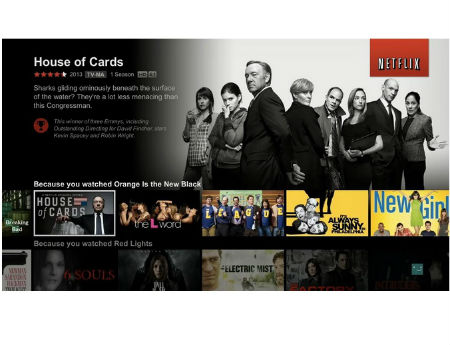New Netflix Encoding Tech Could Keep Caps in Check

In a move that could help Netflix keep bandwidth caps and usage-based broadband policies in check and boost the efficiency of its own streaming platform, the OTT giant has begun to introduce a new approach that encodes content on a title-by-title basis.
According to Variety, Netflix’s method could produce bandwidth savings in the neighborhood of 20%.
Netflix’s new bandwidth-friendly approach is emerging as the OTT provider continues to dominate the traffic running on North American fixed high-speed broadband networks during prime time hours. According to Sandvine’s latest Global Internet Phenomena Report, Netflix traffic accounted for 37.1% of downstream traffic in those periods, dwarfing what’s being generated by YouTube, Amazon Video, iTunes, Hulu and Facebook.
Netflix traffic is not dominant on mobile networks, but it’s an area of concern as more and more viewing occurs on tablets and smartphones. For its new zero-rated, “Binge On” streaming video offering, T-Mobile, for example, is employing a proprietary encoding scheme to get a handle on bit-rate requirements for video that’s delivered in 480p.
As it aims for a system that goes beyond traditional adaptive bit rate processes, Netflix explored the reasoning behind its new per-title encoding optimization scheme and provided some technology background on it via this blog item posted Monday.
“We’ve spent years developing an approach, called per-title encoding, where we run analysis on an individual title to determine the optimal encoding recipe based on its complexity,” Netflix’s Anne Aaron, Zhi Li, Megha Manohara, Jan De Cock and David Ronca noted in the post.
The idea is to apply more bits when needed (such as in a title with lots of action scenes) and fewer in titles where they aren’t needed, such as in animation titles.
The smarter way to stay on top of the multichannel video marketplace. Sign up below.
“This allows us to deliver the same or better experience while using less bandwidth, which will be particularly important in lower bandwidth countries and as we expand to places where video viewing often happens on mobile networks,” they claimed.
Netflix, they explained, is pre-encoding streams at various bit rates that are guided by “optimized encoding recipes.”
Noting that this is not a simple process, they said Netflix’s video encoding engineers developed encoding recipes in late 2010 when the company started to deploy H.264/AVC encodes for its video catalog at the time. It was determined then, using a “bitrate ladder,” that a bit rate of 235 kbps, for example, was sufficient for resolution of 320x240 “without significant encoding artifacts,” while the same could be said for 1050 kbps at 640x480 resolution, and up to 5800 kbps for resolution for 1920x1080 resolution.
But that “one-size-fits-all” fixed bitrate ladder didn’t account for scenes with high camera noise film grain noise, meaning that even a 5800 kbps stream would still “exhibit blockiness in the noisy areas.” But for simpler content, such as cartoons, 5800 kbps was overkill.
To remedy this situation, Netflix is providing each title with a unique bit rate ladder, tailored to its specific complexity characteristics.
Netflix also illustrated some same results of its work, including BoJack Horseman, an animated Netflix original, to Orange is the New Black.
“Given this diversity, a one-size-fits-all scheme obviously cannot provide the best video quality for a given title and member’s allowable bandwidth,” they said, noting that it also wastes storage and transmission bandwidth.
According to Variety, Netflix has been testing the new process and recently introduced it to an initial batch of titles in its catalog, with plans to complete the process by the end of Q1 2016.
